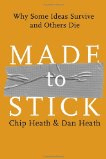How to deliver a successful presentation?
Last week I wrote an article on how to prepare a successful presentation following 6 steps. In this article, I will go into more detail on how to deliver the presentation. As you learned in the previous article, in order to deliver a good presentation you need to be well prepared and you need to have rehearsed properly. The most important thing during a presentation is the audience, so instead of thinking about what you should be saying, you should be thinking about what they should be hearing.
1. Start by standing still, smiling and being silent
Just because you are on stage it doesn’t mean that you as a presenter have everyone’s attention. In today’s world where everyone is connected with their blackberries and iPhones, the battleground for attention is brutal. So how do you get people’s attention? Physiologists will tell you that the way you capture people’s attention is by creating discontinuity. Your audience is expecting movement and sound so to create discontinuity stand still, smile and be silent for a few seconds before you start. This way you will have your audience full attention when you start your presentation.
2. Bond with your audience
Bond with your audience by creating eye-contact with individuals. Don’t just gaze through the room, select someone in the room (ideally someone who has an encouraging facial expression)and establish eye-contact with that person for 5-10 seconds, then move on to someone else. If you’re in a big auditorium and blinded by strong lights just pick a spot and keep your eyes on that spot for 5-10 seconds and then pick another spot. The audience will feel that you have eye-contact with them and that you are bonding.
3. Tell a story
In order to keep your audience attention and to effectively communicate your message, try to deliver your presentation using storytelling. You might think, “How in the world can I tell a story about our fiscal financial results? “ Well, you can! If you need some inspiration of how to tell stories I recommend that you read the sixth chapter called “Stories” of the book “Made to Stick: Why Some Ideas Take Hold and Others Come Unstuck”. In this book, you will learn about three different types of story plots that can help you construct stories for your own presentation. In general, a story should be simple, unexpected, concrete, credible and emotional. It doesn’t have to be something that has actually happened, you can tell a story by saying “Imagine if you woke up one day and you saw …” By starting a sentence in that way you have your audience visualizing which is a big part of storytelling.
4. Leverage non-verbal communication
Some experts claim that as much as 93% of all communication is non-verbal. This means that your body language, your tone of voice, your expressions and your gestures are more important than the actual words coming out of your mouth. You need to be aware of this and use it to your advantage. If you are telling a story, try acting out some of the verbs (if this feels natural). For instance, if you’re telling them about reading the first page of the newspaper, use your hands and facial expression to show your audience how you are reading the newspaper. Make wholehearted gestures, with this I mean use the full length of your arms from the shoulder down, not just from the elbow down. If you feel really awkward and you don’t know what to do with your hands you can hold a pen (without a clicker) or speaker notes. If you’re carrying sheets of paper, make sure to have a minimum of ten. If you’re nervous and have the slightest hand-tremble, a single page will amplify it, whereas ten pages will absorb and mask it.
5. Use the podium
When you present you should be facing the audience, with your legs still, and your feet slightly apart for stability. If you have space, you can move around and use both sides of the podium. This way you can recapture the audiences’ attention by change of visual focus. Remember that most people have an attention span of about 20 minutes so if you’re delivering a long presentation you need to find ways to re-engage your audience. When you move, you need to do this in a deliberate manner and stop and stand still when you’ve gotten to your destination.
6. Master the power of pauses
Don’t be afraid of using pauses. Pauses are a great mechanism for building drama and adding suspense to your presentation. A pause signals to the audience that something profound, important or special has been – or is about to be – said.
7. Take questions as they come
Many presenters ask their audience to keep the questions to the end. I understand that if you are stressed for time and want to make sure to get through everything, you don’t want to be interrupted by questions – especially questions that you might answer later on in your presentation. Despite this, I would strongly suggest that you take questions as they come. Remember that you are there for the audience, by taking their questions as they come, you signal that you care about their comprehension of your message. When you are asked a question, take a step towards the person who asked the question and smile. If there are more than 30 people in the room, repeat the question so that everyone in the audience can hear it.
8. Clearly conclude your presentation
The final step in delivering a successful presentation is to end your presentation clearly and decidedly. If you’ve delivered a great presentation the audience wants to clap, and it is up to you to give them the signal that the presentation is over. Here it can be useful to wrap up using a concluding sentence like:
- To summarize, the call to action for us to be successful is…
- To conclude, by following these five steps…
- As we’ve discussed today the key takeaway is…
End your sentence with a “Thank you”, and if it is appropriate and the audience is applauding you, bow or nod to the audience as a sign of appreciation.
(If you have difficulties reading this article, you can access the full article in pdf here)





